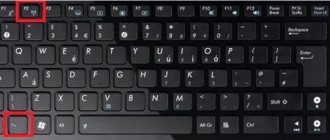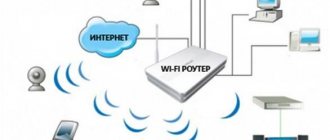For experienced computer users, installing an operating system is a simple matter. However, if a beginner is at the PC, it is unlikely that he will be able to complete this operation the first time. In this case, it is better to first familiarize yourself with all its stages, especially if the system unit contains a non-standard hard drive. This article will tell you how to properly install Windows 10 on an SSD. In addition to a simple analysis of all the actions, the topic of extending the service life of the drive will also be touched upon and recommendations on its use will be given.
Is it worth installing Windows 10 on an SSD?
Having completed all the basic steps, you can proceed directly to thinking about whether it is worth installing the operating system on an SSD. And in general, what is the difference between an SSD with Windows 10 installed and the same HHD hard drive?
Firstly, it’s worth saying right away that the installation process on both the SSD and the HDD is the same and practically no different. Secondly, the harm from installing Windows 10 on an SSD is minimal. Let's look at this in more detail now. The fact is that 10 is a relatively new operating system, so when developing it, all the nuances of working on a solid-state drive were taken into account. Accordingly, you will not need to make many system adjustments after installation to extend the life of your drive.
But this is about Windows 10, now let's talk about Windows of previous versions on SSD, for example, XP. Here you need to immediately understand that this version is very old and was released at a time when there was no talk of SSDs. Based on this, you can guess that it is not optimized for the operation of a solid-state drive, so it will last an order of magnitude less time.
If you just need Windows XP, for example, to run some old software, then there is an excellent alternative. You can easily install it on a virtual machine, for example, VirtualBox. By doing this, you will get all the same features and functionality as on the original Windows XP.
What is the difference between SSD and HDD
Drives differ in the way they store data:
- They are written to the HDD by magnetizing areas of the disk.
- A solid-state drive uses a special memory chip where information is stored. A magnetic disk consists of disks, heads and an electric drive. The latter ensures the rotation of the disks and the rearrangement of the heads.
An SSD drive differs in design from a HDD because it has no moving parts:
- the use of a new method of data storage ensured silent operation and less likelihood of breakdowns and mechanical damage;
- in addition, the writing and reading speed of such devices is several times higher than the characteristics of a magnetic disk;
- the disk has a large amount of memory (up to 3 TB, when SSD - up to 1.5) and a relatively low cost per 1 GB.
| Comparison criteria | SSD | HDD |
| Read/write speed | up to 500 Mb/s | up to 150 Mb/s |
| Access speed | from 0.25 ms | from 3.5 ms |
| Electricity consumption | 0.5 – 3 W | from 6 W |
| Weight | 50 g | 100 g |
Installation on a solid-state drive is preferable due to the fast loading of Windows and instant system response.
How to avoid damaging your disk
We figured out how to install Windows 10 on an SSD, now let's talk about how to extend the life of this drive. First of all, let's figure out why the SSD fails. The thing is that this disk has a limited number of rewrite cycles, after a critical number of which is exhausted, the device can simply be thrown away. But we hasten to please you: there are so many of them that if you use your computer correctly, the drive will last more than 10 years.
So, to increase the “life” of an SSD, you must adhere to the following rules:
- Don't defragment the disk. In Windows, this option is disabled out of the box, so don't try to do it using third-party programs.
- Avoid formatting the disk. If you want to change the file system, it is better to do it in fast mode. But it’s even better to abandon this idea.
- Do not erase information using NSA, DOD, or Gutmann techniques. This is simply pointless, since they are only effective with hard drives.
What to do if during the installation process Windows does not see the SSD
To solve the problem you need:
- Download drivers for your hard drive and transfer them to the installation flash drive.
- Then start the installation and in the window for selecting a partition for installation, click “Download”.
- Then, in Explorer, specify the path to the folder where the driver is located. If everything went well, the disk partitions will appear.
Enabling AHCI mode
If you contact your system administrator and ask questions about what the weakest link in the computer is, you will definitely get the answer that it is the HDD, because it is practically the only mechanical element of the system that slows down work.
Due to this, many drive manufacturers were looking for a way out and finally found it: AHCI mode. Advanced Host Controller Interface involves connecting a SATA serial data transfer interface; also, the speed of reading when accessing a disk in this mode is higher than in IDE, which increases the overall performance of the system.
AMI BIOS
1. To go to the BIOS, after starting the computer, press the “F2” or “Del” key.
Happy end!
The cure was sudden. Despite the fact that we tried to install Windows from a flash drive created in the Rufus application based on the original image (version 1809) downloaded by the official Windows Media Creation Tool application (by the way, we also used a flash drive created by this program, but unsuccessfully), the older flash drive failed , again created in Rufus, but with a Windows 10 version 1803 image.
I didn't have to do anything at all. We simply disconnected all SSDs and HDDs so as not to confuse the installer and booted from an old flash drive with build 1803. It immediately made friends with the NVMe SSD.
If you are as interested in news from the IT world as we are, subscribe to our Telegram channel
.
All materials appear there as quickly as possible. Or maybe VKontakte
or
Twitter
?
We are also on Yandex.Zen
and even Facebook.
What's the problem with SSDs? Is the motherboard to blame?
The backstory is that, having received the Asus TUF H370 Pro Gaming motherboard, we decided that it would easily make friends with modern SSDs, fortunately there is an M.2 slot, there are two of them. And the product description states that it can:
1 x M.2 Socket 3*2, , with M Key, type 2242/2260/2280 storage devices support (SATA & PCIE 3.0 x 2 mode)
1 x M.2 Socket 3, with M key, type 2242/2260/2280/22110 storage devices support (PCIE 3.0 x 4 mode)
Not so. For the test, we decided to purchase not the most expensive, but one of the fastest SSD ADATA XPG ASX8200. We also wrote about prices a little earlier. Our review on the product box states that it has read/write speeds of up to 3500/1200 MB/s. Impressive!
But after several hours of fiddling around, it became clear that this SSD did not want to work with the motherboard. Of course, the BIOS has been updated to the latest version. And this is not the fault of the iron manufacturers. Although ADATA turns out to report that this module is not listed among those compatible for the TUF H370. But a little later we will still be able to start it.
The experiment continued a few days later, when we had a simpler memory chip at our disposal - ADATA XPG SX8000. Here the read/write speeds are already 1900/1100 MB/s. A nuance emerged again. On the compatibility page the Asus TUF H370 Pro Gaming Wi-Fi motherboard is listed, but without support for wireless networks, it was logically assumed that this point would not in any way affect compatibility with modern SSDs, because in all other respects Asus motherboards are identical. But again failure.
Attempt number 3 was made with a Western Digital Black SN750 hardware. The speeds for it are declared by the manufacturer to be 3470 MB/s for reading and 2600 MB/s for writing. Another failure.
All three SSDs were made to work as a second drive in the system, but the system drive was still a traditional SATA SSD. The outcome was unexpected; the problem was with Microsoft.
Preparing your computer and media for installing Windows
Before using the SSD, make sure that its antistatic packaging is not damaged.
Otherwise, the static voltage generated during operation can not only damage the stored information, but also damage the media. Avoid touching connectors or exposed parts of the drive. Update your motherboard's BIOS to the latest version available and make sure the SATA mode is set to AHCI. At this point, the preparatory stage of setting up the system moves to the next stage.
Other things to remember
Many of you have heard myths about choosing between SSD cell types. However, in our time, the reliability of such devices has increased so much that each of them can work in the system unit of an ordinary user for decades. So there’s definitely no need to worry about the longevity of the SSD.
Let's take a simple example: our test computer uses a mid-price Samsung EVO SSD. At the same time, the load of data rewriting on it is simply colossal. More than 6 virtual machines are installed here and data is constantly being copied, due to its rollback to earlier snapshots. However, the diagnostic utility shows five percent wear after a year of use. This is an incredible indicator, and we definitely won’t have to worry about our SSD for another ten years.
How to install for free without a flash drive
The method will save the license. If the PC boots, press “Win+I”, select:
Go to:
Select:
Click Reset.
The installation will begin.
The laptop will reboot. Settings will begin.
Files and standard icons will be saved. The installed software will be removed. The settings will be reset to factory settings.
How is the operating system installed?
In fact, installing Windows 10 from a flash drive to an SSD is exactly the same as a regular installation. There is nothing difficult about it, and if you have ever done it, you will easily cope with everything. If not, here are simple instructions.
When you press “any button to start downloading”, a menu will appear where you will need to select a language.
Let's start the installation.
We accept persons. agreement.
Next you will be asked to enter persons. key. If you have it, enter it. If you have a digital license or plan to activate the system at a later time, skip this step.
Then we choose manual installation because we need to configure the partitions.
A menu will appear where we will be shown the available SD card. Click “Configure”.
If the disk is already partitioned, then simply format the system partition and click “Next”. If the disk has not yet been formatted and there are no partitions on it, then divide it into system and logical. About 50-60 GB is enough for the system, the rest is allocated to the logical drive (D). You can also cut off 10-15% of the total volume and leave it undistributed.
After all these operations, select the system partition and click “Next”.
The installation of system files will begin.
This happens automatically. During the procedure, 2-3 reboots will occur. This is fine. Just don't click anything, otherwise the installation will start again.
Then all that remains is to create an account and carry out the initial PC setup according to the system instructions. Nothing complicated.
SSD optimization
You can increase the speed of your computer by setting up an SSD drive.
Disabling hibernation
On computers with limited RAM, it is recommended to disable sleep mode:
- Go to the Start menu - System Tools - Command Prompt. In the additional section, click the “Run as administrator” option.
- At the command line, enter powercfg -h off and press Enter.
After this, 5-6 GB of memory will be freed.
Pre-configuring computer settings
After installing the SSD on your PC, you need to go into the BIOS and set the SATA controller (SATA 3.0) to a mode called “AHCI”. This procedure will increase the performance of the installed drive, and at the same time extend its service life.
How to activate the “AHCI” mode:
- when loading the OS, go to the BIOS;
- find “SATA Mode” or “SATA Type” (in the “Main” or “Advanced” section, “SATA Configuration”);
- set SATA to “AHCI”;
- save changes;
- restart the laptop.
After restarting the device, you can install Windows from the flash drive. If the user has a licensed edition, then he should not worry that the PC will not detect any drivers. Microsoft will see the problem via the Internet and offer to download the missing software.
It is advisable to activate the “AHCI” mode before installing Win 10. If you perform this procedure after loading the OS, the laptop may not start. Windows will not install on a disk with AHCI mode disabled.
Notes for various operating systems
Modern users pay great attention not only to Windows, but also to other operating systems. Let's look at the features of installing them on a solid-state SSD drive.
- MacOS. While holding down the Optoins button in the menu item, open the system boot window. To run installation on an SSD, you may need to additionally specify the target media type. In some driver versions, this media type may be recognized as FDD or HDD. Therefore, it may not be selected as the first device. The disk will be formatted before installing the OS.
- Unix systems. When installing the operating system, the hard drive will be formatted. Therefore, in case of switching from Windows, it is recommended to copy important information to a third-party independent medium.
Installing media into your computer
When installing it in a personal desktop computer case, you must take into account the fact that the SSD drive has a 2.5-inch form factor. This means that it is necessary to have a suitable compartment in the design of the system unit rack or to use special mounting brackets and screws. It’s worth adding right away that unstable fixation of the SSD is highly discouraged, because Strong vibration can reduce the life of the device.
If you own a laptop, the mounting process will become much easier, since compact devices use storage media of exactly this form factor. So installing a new SSD will be limited to switching contacts from an already used disk.
In any case, after fixing the disk, you need to connect it. Two cables are used for this. The first is the power cable and comes from the power supply. For user comfort, this cable is equipped with a notch mount that will reduce the likelihood of incorrect connection. If your system does not have a suitable wire, you can purchase an inexpensive “adapter”.
The second cable is a signal cable and is used for data transmission. Most modern SSDs use a SATA connector, which is also equipped with a notch for proper connection. One end of the cable is plugged into the data carrier connector, the other into the motherboard. Before purchasing an SSD, make sure your motherboard has SATA connectors as there are no data cable adapters available.
Connect the power cables and turn on the computer. At startup, the BIOS recognizes the media and you can proceed to the next step of the instructions. Otherwise, check that all steps of this algorithm have been completed. If, after reconnecting, the media is not recognized by the system, then there is a high probability that the device is incompatible with your motherboard or that one of the devices is faulty.
Defragmentation and optimization of the drive
HDD disk defragmentation is necessary to maximize performance. It automatically rewrites files so that they are not split into parts and are physically located on the same track. Otherwise, the read and write speed of the media is reduced. Due to the excellent operating principle of a solid state drive, defragmentation is not necessary.
With the advent of Windows 8, the defragmenter was replaced by another utility - TRIM. It serves to optimize the operation of the SSD drive. In addition, it determines the type of disk and performs the necessary actions for each.
Defragmenting an SSD drive can be harmful to it, reducing the life of the drive. Therefore, already in the 7th version of Windows, this process was disabled by default.










